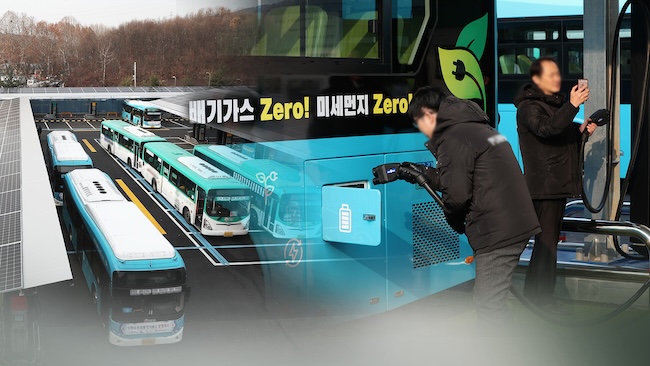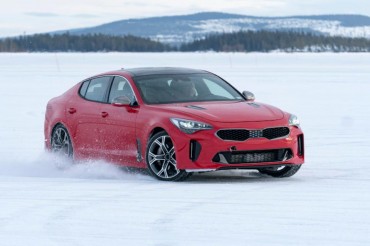
Domestically produced vehicles have captured nearly 60% of new registrations in the first half of 2024. (Image courtesy of Yonhap)
SEOUL, Jul. 18 (Korea Bizwire) – In a significant shift in South Korea’s electric bus market, domestically produced vehicles have captured nearly 60% of new registrations in the first half of 2024, marking a pause in the rapid expansion of Chinese electric buses in the country.
According to data released on July 17 by the Ministry of Land, Infrastructure and Transport and the Korea Automobile Mobility Industry Association (KAMA), 1,076 new electric buses were registered in South Korea from January to June. Of these, 638 units, or 59.3%, were domestically manufactured.
This represents an 18.6 percentage point lead over Chinese-made electric buses, which accounted for 40.7% of new registrations. This gap is the largest seen in the first half of any year over the past four years.
The market share difference between South Korean and Chinese electric buses had been narrowing since 2020, when it stood at 30.6 percentage points. It decreased to 18.4 points in 2021, 2.6 points in 2022, and 11 points last year. However, this trend has reversed in 2024.
Since Chinese electric buses first entered the South Korean market in 2017, the share of domestic products had been steadily declining. On an annual basis, South Korean electric buses’ market share fell from 66.8% in 2020 to 62.2% in 2021, and further to 58.2% in 2022. In 2023, it dipped below 50% for the first time, reaching just 45.9%.
The turnaround this year has been dramatic, with domestic products capturing 73.7% of the market in May and 67.2% in June.
Industry experts attribute this shift to recent changes in electric vehicle subsidy policies. In February, the Ministry of Environment announced a new policy that provides differential subsidies based on battery energy density and recyclability.
This policy change has particularly impacted Chinese electric buses, which had gained a price advantage by using cheaper lithium iron phosphate (LFP) batteries instead of the nickel-cobalt-manganese (NCM) batteries favored by South Korean manufacturers.
For instance, the BYD e-BUS 12, imported by GS Global, now qualifies for about 28 million won less in subsidies compared to last year.
According to the Ministry of Environment’s Zero-Emission Vehicle Portal, BYD’s 41-seat e-BUS 9 now qualifies for about 45 million won less in subsidies than Hyundai’s comparable Elec City Town model.
Professor Kim Pil-soo of Daelim University’s Future Automotive Technology Department explained, “Given the large battery capacity in buses, it was necessary to give a competitive edge to NCM batteries, which have a higher recycling potential. In this respect, the new electric vehicle subsidy policy has significantly helped domestic products regain price competitiveness.”
Kevin Lee (kevinlee@koreabizwire.com)







